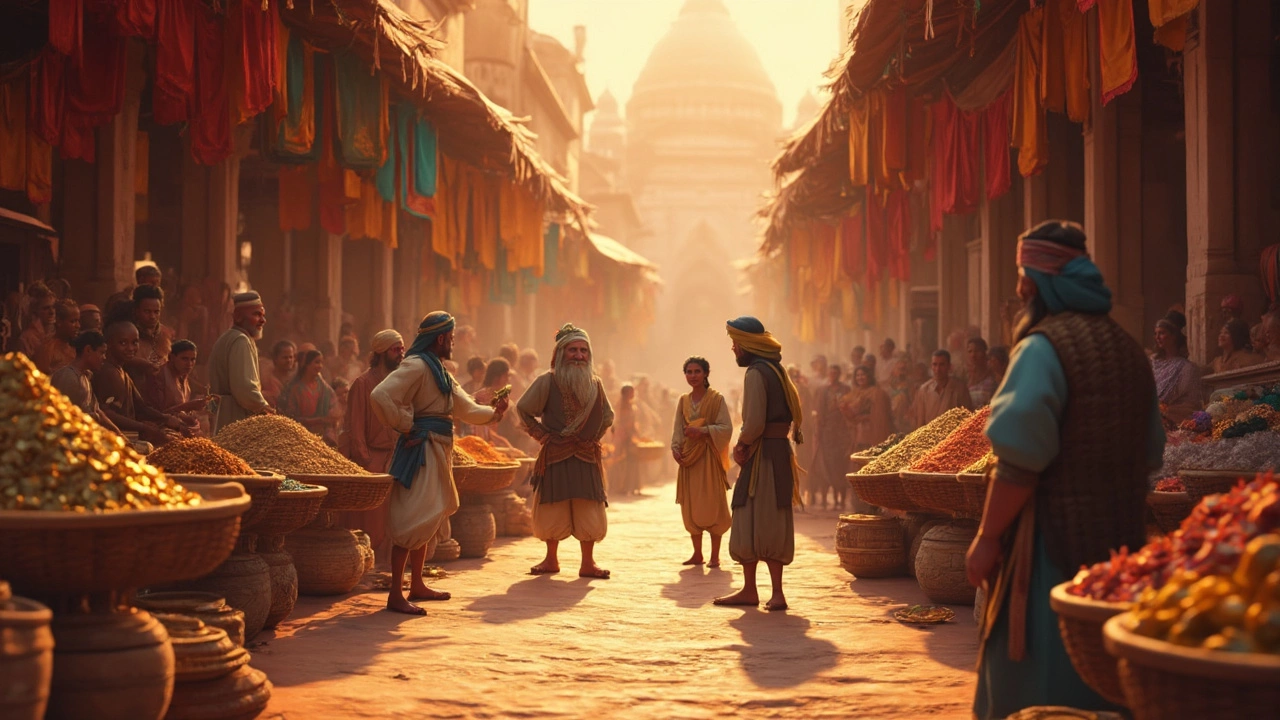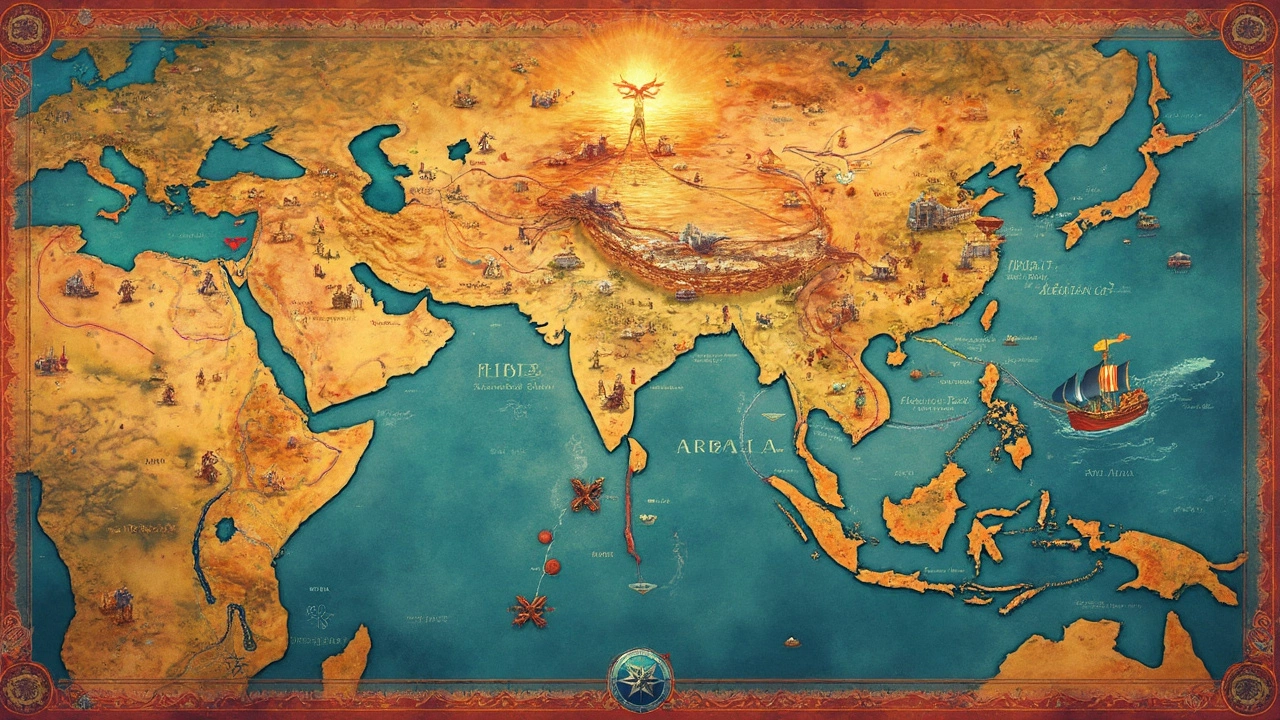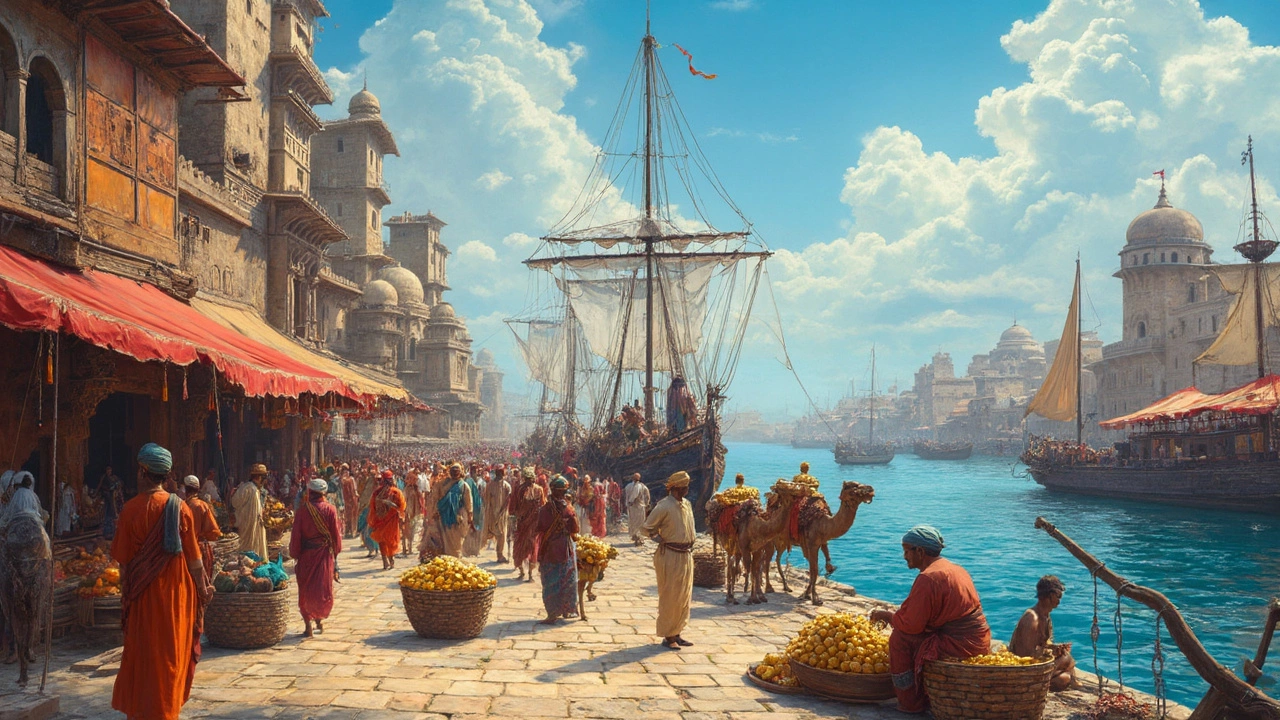Imagine a world where black pepper is worth more than gold, and nutmeg can launch entire wars. Sounds wild, right? That’s the story of India’s trade history. This isn’t some Indiana Jones myth; merchants from tiny medieval villages and mighty empires all had their sights set on India, jostling to get their hands on treasures that were anything but ordinary. The lure wasn’t just about getting rich quick—it was about survival, power, and sheer curiosity. To really get why traders risked life and fortune for India, you’ve got to step into their worn-out shoes and see the world as they did: full of promise, danger, and endless spice-scented opportunity.
The Spices that Changed the World
Walk into any kitchen today and you’ll see a rainbow of spice jars—cinnamon, cardamom, cloves, black pepper, and turmeric. Back in the day, these were the hottest commodities on the planet, and almost all of them grew wild and wonderful across India’s fields and forests. While it might sound like a niche market, spices played a vital role in medicine, preserving food, perfume, and even religious rituals. Black pepper was so valuable some Roman soldiers were paid in pepper instead of coins. Demand went wild because food spoiled quickly in Europe’s damp, cold winters, and spices kept things edible and tasty for longer.
There was another layer to the spice chase: exclusivity. If a nobleman in Venice could sprinkle rare Indian spices on his meat, suddenly he was eating better than the king of England. Spices from India fueled everything from international feasts to treaties among powerful nations. Portuguese explorer Vasco da Gama’s entire career pivoted on his obsession with reaching India directly, bypassing slow overland routes. When he finally made it in 1498, the global trading roadmap flipped upside down.
It wasn’t smooth sailing, though. Monsoon winds along the Indian Ocean played both helper and trickster for sea-bound traders. Get the timing wrong and you’d be stranded or shipwrecked. Those who made it, like the Arab, Persian, and Chinese merchants before the Europeans, opened up ports like Calicut and Cochin for business, turning sleepy coastal villages into wild hubs of trade. Each new arrival meant fresh fortunes—spices could be traded for weapons, precious metals, and horses practically overnight. No wonder the quest for India's spices built and broke empires!
Textiles, Gems, and the Promise of Wealth
If you’ve ever worn soft cotton or admired intricate silk, you’ve unknowingly tapped into another reason India was a magnet for ancient traders. Long before industrial fabrics took over, India ruled the global textile game. Merchants would travel for months just to get their hands on Dhaka muslin, so fine it was called “woven air.” Indian silk was another obsession, showing up in Roman togas and Chinese court robes. Even the earliest evidence of dyeing and block printing on cloth comes from Indus Valley sites like Mohenjo-daro, dating back over 4,000 years.
But it didn’t stop at fabric. India’s soil hid shiny secrets: diamonds, rubies, sapphires, and pearls. The world’s only diamond mines until the 18th century were in India. Kings and queens hoarded these gems, believing they guarded kingdoms against evil and disease. The Mughal Emperor Shah Jahan’s Peacock Throne alone glittered with over 100 unique diamonds pulled straight from Indian riverbeds. The lure was irresistible—Venetian jewelers would send scouts to India just to bid against Ottoman and Persian royalty.
Don’t forget gold and silver. India wasn’t just a seller; traders often paid for luxury goods with precious metals. Across centuries, so much Roman gold ended up in Indian treasuries that Pliny the Elder, a Roman author, complained of Rome being drained dry. This flow of wealth flipped the usual script of the world economy and made Indian merchants some of the richest and most influential on the planet.

Caravans, Oceans, and the Real-Life Silk Road
The image of the Silk Road gets thrown around a lot, but what did it actually look like on the ground (or sea)? Two main arteries carried India’s goods far and wide: overland caravans and daring ocean voyages. Overland, traders slogged through desert dust and rocky paths linking India with Central Asia, the Middle East, and finally, Europe. Camel caravans were loaded with everything from Chola dynasty bronzes to Kashmiri shawls. Along the famous Grand Trunk Road, legendary cities like Taxila and Peshawar became bustling crossroads, catering to everyone from Greek philosophers to Mongol horsemen.
But it was the sea that really turbocharged Indian trade. The Indian Ocean corridor—the world’s oldest international ‘superhighway’—let traders hitch rides on predictable monsoon winds, cutting months off travel times. Arab sailors mapped wind patterns so accurately they passed them down through generations in rhyme and song. You could catch a dhow from Gujarat and hit up ports in Oman or East Africa, trade your wares, then swing over to Southeast Asia for rare wood and spices. Before the Suez Canal made Egypt the shortcut, Indian goods flowed through the Red Sea up the Nile, ending up in bustling Greek and Roman markets.
Check this out: Here’s a quick table showing how far and wide Indian goods traveled by the 1st century CE:
| Destination | Main Indian Exports | Key Route |
|---|---|---|
| Rome | Spices, silk, gems | Red Sea/Nile, Silk Road |
| China | Spices, textiles, ivory | Land via Silk Road; sea via Bay of Bengal |
| Arabian Peninsula | Spices, textiles, incense | Arabian Sea, overland Arabia |
| Southeast Asia | Spices, beads, cloth | Indian Ocean, Malacca Strait |
| East Africa | Beads, cloth, pottery | Indian Ocean, Swahili coast |
This sheer spread made Indian markets legendary. Traders from all corners swapped news as much as goods, turning every port bazaar into a hotbed of cultural exchange. Can you imagine the gossip in those taverns at dusk?
Power, Prestige, and the Ties that Bound Empires
Of course, it wasn’t just about money or shiny stuff—control over India’s trade meant control over the balance of power. Rulers, from the Mauryas to the British, made it their top priority to protect and tax trade routes. The ancient Mauryan Empire built a whole department just for overseas commerce, called the Panyadhyaksha. Mughal emperors like Akbar dispatched agents to monitor prices and protect merchant caravans from bandits.
The chase for Indian trade got colonial empires fired up. The Portuguese muscled into Goa, the Dutch built warehouse forts in Surat and Cochin, and the English East India Company started as a group of wool merchants before taking over most of the subcontinent. It was never just about the goods; it was about the prestige of saying, ‘We control the world's richest markets.’
Here’s a tip for anyone trying to understand modern globalization: the scramble for India set the pattern. Trade alliances, betrayals, stock market crashes—they all played out, just with silk sashes and peppercorns instead of Wi-Fi and smartphones. Even treaties like the Treaty of Tordesillas (which split the world between Spain and Portugal) were made not for gold, but for access to the pepper and clove-rich Kerala coast.
Many languages and cultures cross-pollinated through trade. Words like “sugar,” “ginger,” and “jute” entered European languages from ancient Indian tongues. Indian mathematics, astronomy, and stories traveled with the caravans—think zero, chess, and even yoga stretches in Roman gyms. Trade didn't just build economies, it built civilizations.

What Can We Learn Today from India’s Trading Legacy?
If you check out modern Mumbai’s chaos or the bustling wholesale bazaars of Delhi, you’re seeing echoes of the same energy that drew traders for thousands of years. India’s biggest cities are a crash course in international hustle—deals happen in street-side tea stalls and luxury boardrooms alike, some things never really change.
There’s a lesson here for today’s entrepreneurs and travelers: India’s open doors to foreign traders came with curiosity, flexibility, and know-how. Merchants thrived because they adapted—learning new languages, switching currencies, and finding clever ways to move goods past pirates and corrupt officials. Want to succeed in any business? Study how these guys rolled with the punches: risk big, adapt on the fly, and keep an ear out for what the world craves next.
And if you ever get your hands on genuine Indian saffron or cardamom, remember you’re holding more than a flavor—you’re holding a piece of the long history that made India the world’s most sought-after trading partner.
